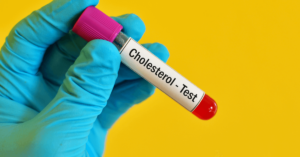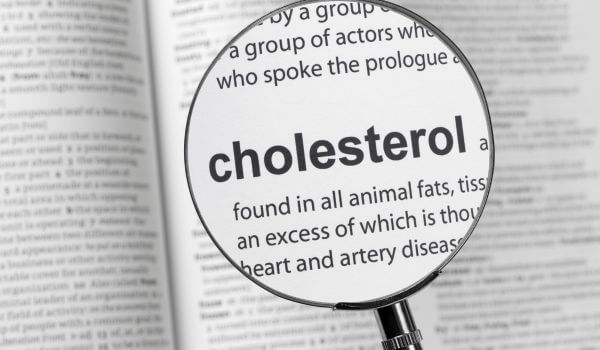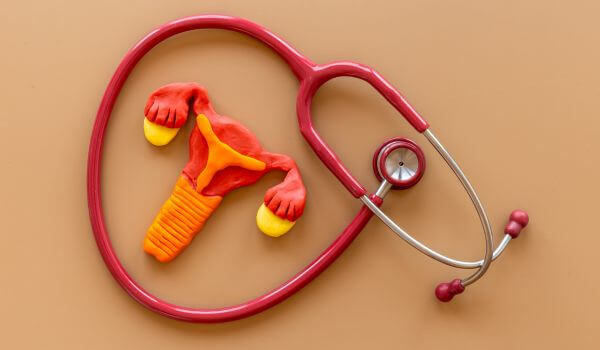
The importance and danger of cholesterol
The body needs cholesterol to work correctly and synthesize a range of steroid hormones, vitamin D, and bile acids that aid in food digestion. It also plays a crucial role in regulating cell functions.
Cholesterol is carried around in the bloodstream in small packages called lipoproteins, made up of fat (lipid) on the inside and proteins on the outside. The two main types of lipoprotein are low-density lipoprotein (LDL) and high-density lipoprotein (HDL).
Cholesterol carried by low-density lipoprotein is sometimes called “bad cholesterol.” People with familial hypercholesterolemia have high LDL cholesterol levels because they can not properly remove the LDL from the bloodstream.
Cholesterol from high-density lipoprotein is sometimes called “good cholesterol” because it lowers the risk of heart disease. It carries fats from other body parts to the liver, where they are removed from the blood.
If too much cholesterol is present in the bloodstream, it builds up plaque on the walls of the arteries and increases the risk of heart disease.
Familial hypercholesterolemia
According to the National Genome Research Institute, familial hypercholesterolemia is an inherited condition that causes high levels of “bad cholesterol” from birth, and people with these genes can suffer heart attacks from an early age. Men with inherited familial hypercholesterolemia can start having heart attacks in their forties and fifties, and nearly 85% of men diagnosed with the condition have had a heart attack by age sixty. Women who have inherited the gene also have an elevated risk of a heart attack, but it usually occurs a decade later than in men.
Familial hypercholesterolemia is carried by a single (autosomal) dominant gene. One copy of the gene exists on each of the two DNA strands that comprise the chromosome (in this case, #19). Since it’s a dominant gene, there’s a one-in-two chance that a child will inherit the condition, and on average, the parents in the population in one generation will pass the condition on to 50% of the children in the next generation.
When the gene functions properly, it causes the production of the LDL receptor protein. This protein is a “sweeper” responsible for clearing up excess LDL in the bloodstream. When the gene is not working correctly, the LDL remains in the blood and can cause plaque to grow in major arteries, eventually leading to blockages, cardiac arrest, and even death.
Individuals with only one copy of the mutant gene are called heterozygotes. About one in five hundred people are born with a copy of the mutation. More rarely, a person inherits a mutant version from both parents (homozygous). Homozygous people may have a more aggressive form of hypercholesterolemia, heart attack, and death can occur before age 30.
Testing for Familial Hypercholesterolemia
Doctors can order a specific blood test, called a fasting lipid profile, which measures blood cholesterol levels after a 12-hour fast. It reports low-density lipoprotein (LDL), high-density lipoprotein (HDL), triglycerides, and total cholesterol levels. If the results show higher-than-normal levels of “bad cholesterol” without the usual accompanying increases of HDL and triglycerides seen in most cases of hyperlipidemia, further investigation may be necessary.
A family history showing hyperlipidemia in at least one parent may prompt specific genetic testing for a mutation in the LDL receptor gene.
About Hyperlipidemia
Hyperlipidemia is a condition in which there are elevated levels of cholesterol and triglycerides in the bloodstream. These are lipids (fats), which are usually determined by multiple factors, including genetics, diet, and lifestyle. For many people, the combination of these factors will also lead to them being overweight or obese.
Living with Familial Hypercholesterolemia
Everyone should take good care of themselves to avoid the consequences of overindulging in potentially dangerous food. But those born with these specific genetic patterns must be especially careful about controlling their input of bad high-fat food. They should also get good medical advice about how medications can help them overcome the weak hand that they have been dealt.
Treatments for hyperlipidemia caused by Familial Hypercholesterolemia
The preferred treatments for hyperlipidemia aim to lower LDL cholesterol and triglyceride levels to reduce the risk of cardiovascular disease. Dietary control, lifestyle changes, and medications are the most common approaches to managing hyperlipidemia.
Medications for hyperlipidemia caused by familial hypercholesterolemia
The main goal is to lower the risk of heart disease (atherosclerosis) by reducing LDL cholesterol levels in the bloodstream. Atherosclerosis is a condition in which fatty material (plaque) collects and sticks to the walls of arteries, causing them to thicken and harden. It can eventually block the blood flow through the artery leading to heart attack and stroke.
As stated by the NIH article about familial Hypercholesterolemia, “drug therapy is usually necessary in combination with diet, weight loss, and exercise, as these interventions may not be able to lower cholesterol levels” sufficiently. Individuals who have homozygous familial hypercholesterolemia may require more aggressive therapies because standard drug therapies may not be enough to lower LDL cholesterol levels to the required level. Such patients may require LDL apheresis, which removes LDL from the bloodstream. If this doesn’t work well, a liver transplant may be necessary.
The most popular medications prescribed to treat familial hypercholesterolemia are Lipitor and Zetia.
Lipitor (atorvastatin) is an effective statin for the treatment of hyperlipidemia because it offers several advantages over other therapies for hyperlipidemia:
- effective in lowering LDL cholesterol levels by inhibiting an enzyme involved in cholesterol production
- can be used for individuals with mixed hyperlipidemia, characterized by elevated levels of both LDL cholesterol and triglycerides
- shown to have additional cardiovascular benefits, improve endothelial function, reduce inflammation, and stabilize atherosclerotic plaques
Zetia (ezetimibe) inhibits cholesterol absorption in the intestines and can lower LDL cholesterol levels by 15-22% on its own and by 21-27% if used in combination with atorvastatin statin. Combining ezetimibe with atorvastatin can reduce cholesterol levels, equivalent to more than doubling the dose of a statin on its own.
Frequently Asked Questions
What are the symptoms of familial hypercholesterolemia?
The primary symptoms and signs of familial hypercholesterolemia are abnormally high levels of total cholesterol and LDL cholesterol, a family history of high LDL cholesterol or early heart attacks, elevated levels of LDL in either parent that did not respond to treatments, waxy deposits (xanthomas) on the skin or in tendons, cholesterol deposits (xanthelasmas) in the eyelids, cholesterol deposit around the cornea of the eye (corneal arcus).
If chest pain is already being felt, it may be a sign that heart disease is currently present.
In people with homozygous familial hypercholesterolemia, xanthomas develop at a very early age beneath the skin over the elbows, knees, buttocks, and tendons. Heart attacks may occur before the age of 30.
What do blood tests for people with familial hypercholesterolemia show?
Blood testing of cholesterol levels may show total cholesterol above 300 mg/dl in adults or more than 250 mg/dl in children and LDL levels above 200 mg/dl. Other tests may be ordered, such as a stress test.
How to treat familial hypercholesterolemia (FH) without statins?
To lower cholesterol, a healthy diet, regular exercise, losing weight and stopping smoking and alcohol can produce overall health benefits. But while these changes are essential for good health, they often are not enough for people with FH and need to be compined with drugs and other therapies.
















